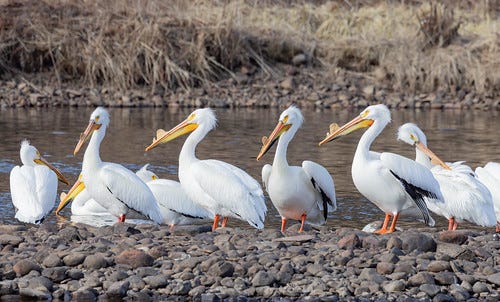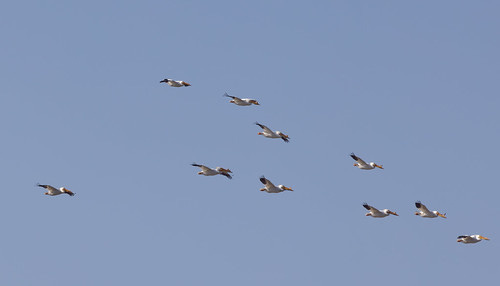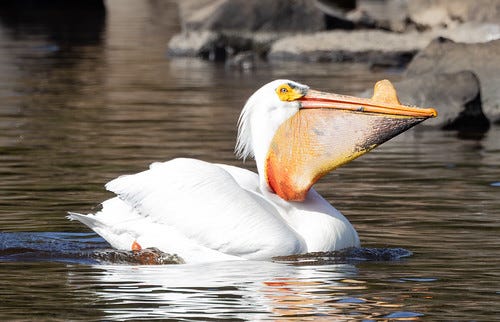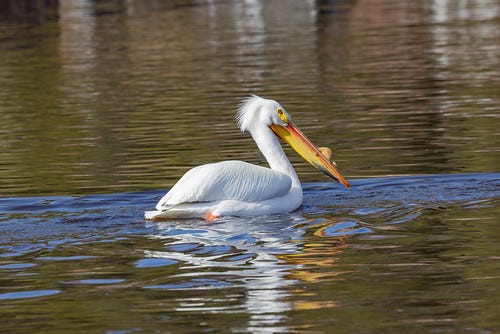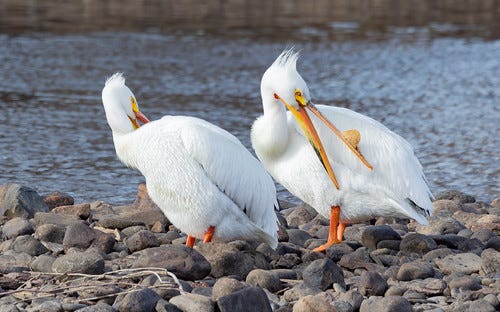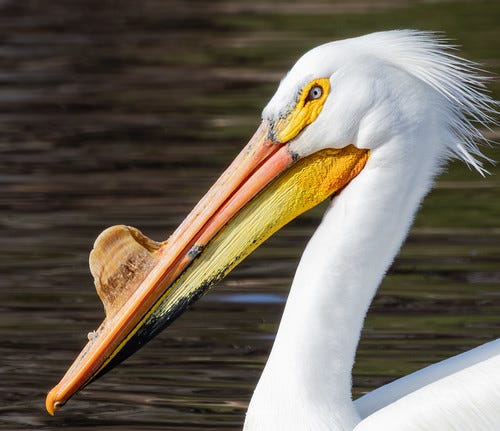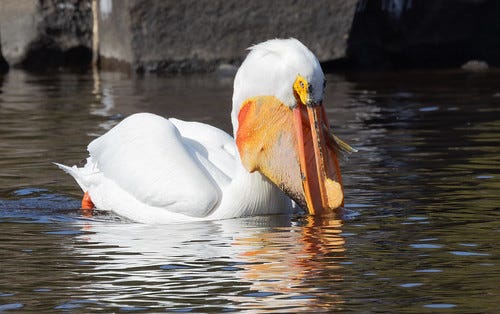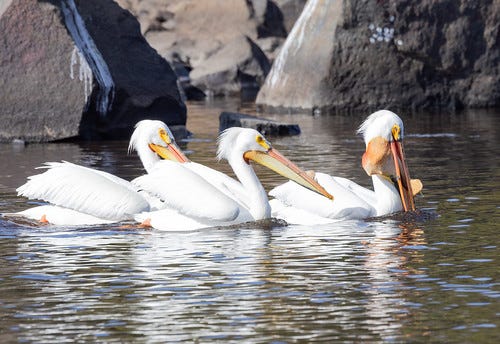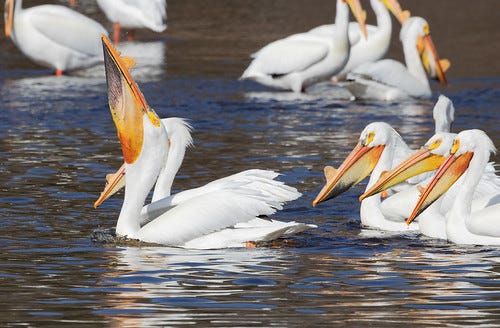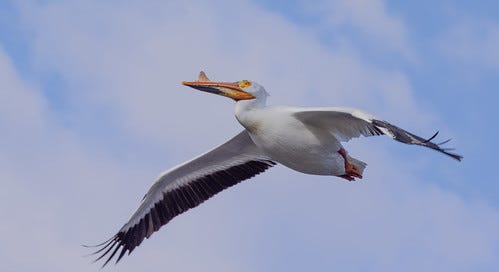(Listen to the radio version here.)
Now that I’ve been living in Duluth for 44 years, I finally did something I’d never made time for before—I went with my birding buddy Bernie to Chambers Grove Park during the time in April when American White Pelicans are staging there. Many large water birds “stage”—gather in large flocks during migration between their wintering range and their breeding range in a tried-and-true safe area where food is abundant. The birds pig out and rest up to prepare for both their final migratory surge and their most important job of the year: making and raising new baby pelicans.
The birds at Chambers Grove arrived here from the southeastern states. These birds probably don’t breed in Minnesota—from16,000 to 22,000 nesting pairs breed at 15 to 17 sites in the state, across the western two-thirds of the state, and Duluth would not be on any sensible normal migration path to there, so these birds are almost certainly headed to Canada, and like people headed to the Boundary Waters or Thunder Bay, Duluth makes a fine stop en route.
Pelicans have been staging on the river at Chambers Grove for years, but I never got there before for various reasons. This year I decided not to let anything stand in my way. My original plan was to go on Tuesday, April 22, but rain was in the forecast and the sky was murky, so we waited a day, and I’m very glad we did. The lighting was perfect, showing to perfection every one of the 150 or so pelicans in almost full breeding plumage, highlighting the delicately ribbed pouch that expands when holding prey …
…but contracts when empty …
…the cool growth on the upper bill called a “plate” that grows in spring, reaches full size during courtship and early nesting, and is then shed…
…and the elongated plumes on their crown and upper nape.
The bills weren’t in their full breeding color yet. Many of the birds had the blue eyes that are another element indicating a breeding bird. The eyes change color back to hazel after the breeding season.
I’ve seen plenty of pelicans during my birding life, but this was the most I’ve ever seen in one place, and they were incredibly close—I took hundreds of photos, and most of them turned out: birds in flight, on the water, and sitting on rocks preening or loafing. I watched one get a huge fish that it had trouble positioning to swallow.
Another pelican grasped its throat pouch with its own bill, and the one trying to eat didn’t resist or pull away at all, leading me to believe the second bird seemed to understand the difficulty and was trying to help the first bird align the fish right.
In the end, it finally got it down.
It seems odd to think a pelican would help another eat a huge fish, and I’m not 100 percent certain that that’s what was happening, but pelicans do fish cooperatively, gathering in a tight group to herd fish into shallow water where they can all have a good chance of feeding.
I was thinking the bird that helped the other must have been its mate, but pelicans aren’t known to pair up before arriving on their breeding grounds, so I’m not sure whether this is a case of functionally illiterate birds ignoring the rules or if I’m just plain wrong about that.
My son-in-law has been reading The Wild Robot books to my grandson Walter. The books are about a robot who raises a baby goose and teaches it to be wild and to associate with other geese. Suddenly Walter is taken with birds flying in V-formations, something pelicans do when traveling, but not so close to where they are taking off and landing.
Walter found it funny that of all the letters in the alphabet, birds chose the letter V to define their formations, and now I keep picturing geese or pelicans flying in a perfect B or G.
I’ve gotten pretty good at photographing while I watch birds. I know that in the moment, I don’t see them as well through the camera as I would through binoculars, but I do see them, and sometimes the details I get on a camera confirm, right there in the field, a bird that was just in view a few seconds. And whoa! When I get home and look at my pictures, I can study details I’d never have been able to observe in real time.
But I occasionally pulled my head away from my camera to watch the pelicans floating above me, sometimes slowly flapping, sometimes soaring, always beautiful. Aldo Leopold wrote, “With queer antediluvian grunts they set wing, descending in majestic spirals to the welcoming wastes of a bygone age.”






